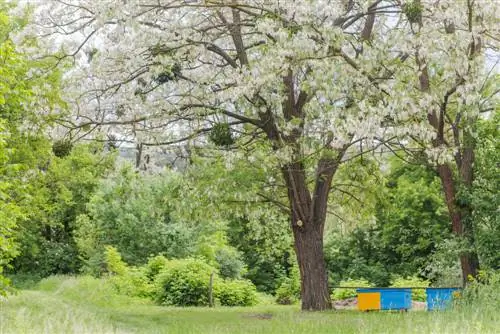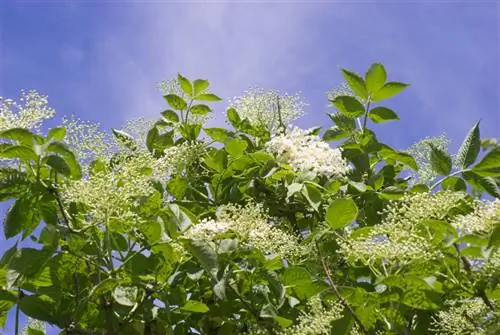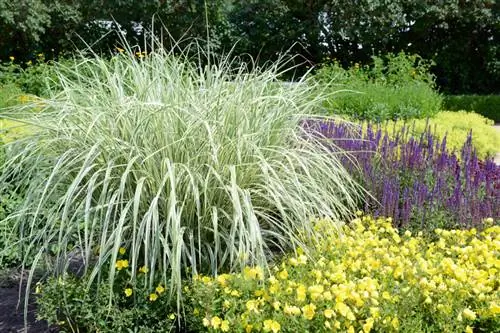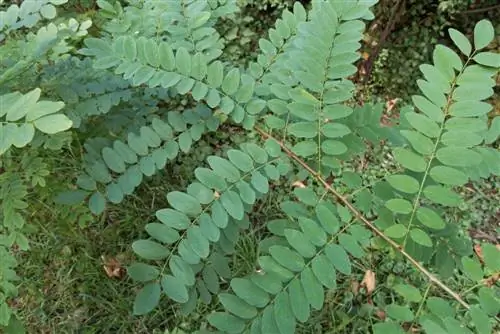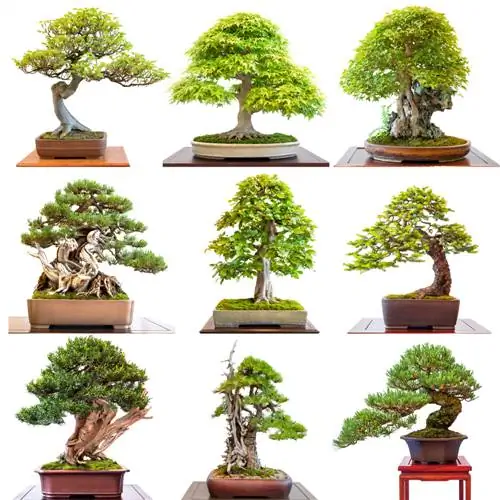- Author admin [email protected].
- Public 2023-12-16 16:46.
- Last modified 2025-01-23 11:21.
Create the best conditions for the he althy growth of your robinia. If you take a few aspects into account, your otherwise undemanding deciduous tree will develop even better. The following article reveals what is important when caring for a robinia tree.
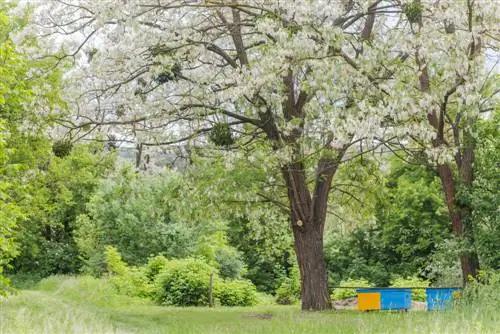
How do you properly care for a locust tree?
Caring for a robinia includes occasional fertilization and watering when young, pruning when necessary, overwintering outdoors with additional protection and protection from pests such as lice or leaf miners through appropriate measures or natural defense mechanisms.
What does caring for a black locust involve?
- Fertilize
- Pouring
- Cutting
- Wintering
- Protection against pests and diseases
Fertilize
It's best to plant your robinia in loose, well-drained soil. If these requirements are not met in your garden, it helps. Improve loamy or clayey soil with coarse sand or organic compost. Fertilizing a black locust tree is only necessary when it is young. The tree can then supply itself with sufficient nutrients.
Pouring
If your robinia is on very dry ground or is exposed to strong heat, you should keep the substrate constantly moist. Otherwise, the same applies here as with fertilizer: watering is only necessary immediately after planting.
Cutting
The robinia is a wonderfully easy-care deciduous tree and shows uniform growth even without pruning. You can still remove annoying or wilted branches. Pruning is actually only necessary if you want to hook your robinia tree at a certain height. An exception are cultivated forms of the tree. Choose a day in January or February to prune. Small interventions can be carried out all year round, but under no circumstances during the budding season in spring.
Wintering
Robinias are hardy plants and can be kept outside all year round. A layer of mulch or brushwood provides additional protection.
Protection against pests and diseases
Lice often infest robinia trees. You can recognize them by their yellow, wilted leaves. You can get chemical products from the tree nursery to combat the pests. However, if it is the robinia leaf miner, there is no need for action. The deciduous tree develops its own defense system to thwart the larvae.

